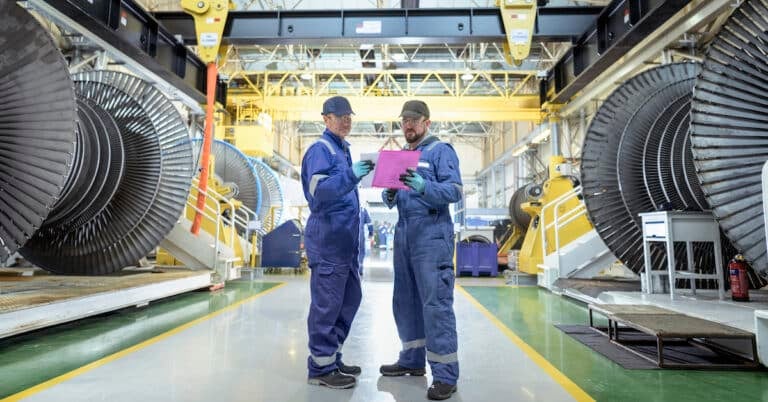The Mine Safety and Health Administration (MSHA) is an agency that was created to promote the welfare of mine workers in the US. MSHA achieves this goal by providing safety and health guidelines and inspecting the compliance of all mines across the country. In this post, we explore the essential role of a CMMS (computerized maintenance management system) in facilitating MSHA inspections and, ultimately, ensuring miner safety.
What is MSHA?
The US Mine Safety and Health Administration was established as a Department of Labor agency under the Federal Mine Safety and Health Act of 1977. MSHA sets the standards for a safe working environment for all mines in the country. These standards are based on the act’s health and safety laws on all mining and mining operations of all sizes. MSHA’s main mission is to reduce death, injury, and illness in mines through a variety of activities and programs. One of these critical activities is the regular inspection of mines for their compliance with the said standards. MSHA also provides educational, technical, and other types of assistance to mine operators to further promote worker safety.
MSHA Inspection Policies
The number of MSHA inspections a mine must undergo yearly depends on the type of mine. Underground mines must be inspected at least four times a year, while surface mines might only undergo inspection twice yearly. The presence of explosive or toxic gases can increase the number of inspections. In addition, any reports of the presence of hazardous conditions in a mine can result in an inspection.
When MSHA inspections result in violations of health and safety standards, inspectors issue a citation for the violations. This citation would state the violated standard, the potential consequences of this violation, and other relevant recommendations. Citations can result in penalties if the inspector considers the violation as “significant and substantial.” Furthermore, inspectors can issue an order of withdrawal if they see a high likelihood of danger and when violations remain uncorrected after the allotted time. The presence of untrained miners or unjustifiable non-compliance can also result in an order of withdrawal.
MSHA inspections end with the inspector explaining the results of the inspection. The operator can further request in writing a conference at the nearest MSHA district office within the next 10 days. This request should specify the details or operator’s reasons for requesting to discuss the citation further.
Benefits of MSHA Inspections and Compliance
Ultimately, a mine’s compliance with MSHA standards promotes a safe and healthy workplace within a mining operation. Additionally, these conditions come with the following benefits:
Reduced Costs
Unsafe or unhealthy conditions increase the costs of operations. Workers are less productive if they are prone to accidents or illness. Operators can also spend more on penalties for non-compliance or lose revenue if the MSHA orders the operation to stop.
Improved Company Perception
Mines are valuable industries but are increasingly viewed negatively as unsafe and unsustainable companies. Compliance with MSHA inspections helps mines demonstrate their commitment to their workers’ well-being. This will help earn the trust and support of the community and improve the company’s brand.
Predict and Prepare for Risks
Mine operators are aware of the potential risks of life-threatening events that can happen at their site but often lack specific instructions to identify and plan for these risks. By complying with MSHA inspections, operators can have a detailed guide for checking their sites and improving them to reduce risks of death, injury, or illness.
Training Programs
Compliance with MSHA inspections also provides mine operators access to MSHA-organized training programs or similar activities. The operators and their workers can learn about safe mining procedures, safety precautions, and equipment use at minimal company expense.
Keep Up to Date with Standards
Standards and guidelines are not set in stone. These are bound to change as new mining methods and technologies evolve over time. By complying and routinely getting inspected by MSHA, mine operators ensure they keep up to date with the changing mine safety laws and regulations.
Facilitating MSHA Inspections with CMMS
CMMS is a modern tool that uses computer power to organize, automate, and monitor maintenance tasks. It is essentially a platform where you can manage maintenance programs and processes. In addition, CMMS also serves as a database where teams can keep valuable maintenance files, checklists, and media for safekeeping and future reference. Finally, CMMS also has analytical functionalities, allowing users to extract trends and reports that will aid in improving maintenance processes and strategies.
When it comes to compliance with MSHA inspections or similar regulatory audits, CMMS can serve as a repository where teams can keep all critical inspection data. Thus, CMMS can facilitate MSHA inspections by:
Keeping digital records of compliance.
As the common rule of audits goes, anything unrecorded did not happen. Paper-based records of safety precautions on equipment use, for example, can easily get lost if physically filed. CMMS can store digital copies of such records and store them in the database to be easily retrieved when the MSHA inspector asks for them.
Collecting and organizing information.
Preparing for inspections and audits mainly involves collecting and organizing files and documents. These tasks can be time-consuming if you are dealing with physical records. CMMS not only stores documents in searchable formats, but it can also help retrieve reports from various departments. For example, CMMS can easily collect safety and health checklists from operations, engineering, maintenance, human resources, and other related departments.
Asset monitoring.
Monitoring the life cycle of assets in mine operations is critical to the health and safety of the people who use or work alongside these assets. MSHA inspectors would consider it a violation if mines are not monitoring the criticality and age of their machines, safety equipment, and other tools. CMMS is thus valuable in keeping easy-to-retrieve records of asset monitoring.
Monitoring MSHA compliance.
Mine operators must keep track of citations, non-compliance, and corrective actions. CMMS lets you record inspection results and files, storing them for future reference. Monitoring MSHA compliance through CMMS prevents penalties and fines. It also ensures that non-compliance and the resulting risks are under control.
Conducting mock inspections.
CMMS can also help conduct mock inspections to prepare for the actual MSHA inspection. These mock inspections, internally done by the company, provide the chance to correct any non-compliance before these non-compliances are cited by the MSHA inspector.

Improve MSHA Inspection Compliance with Redlist
Redlist’s CMMS is a genuine, customizable, and powerful software that provides all the above CMMS benefits for MSHA inspections. One company used Redlist and saved up to $200,000 in annual MSHA fines. Similarly, if your company is stacking up regulatory fines or health and safety costs, you might be missing Redlist in your operations. Experience our user-friendly and flexible software by scheduling a free demo today!


